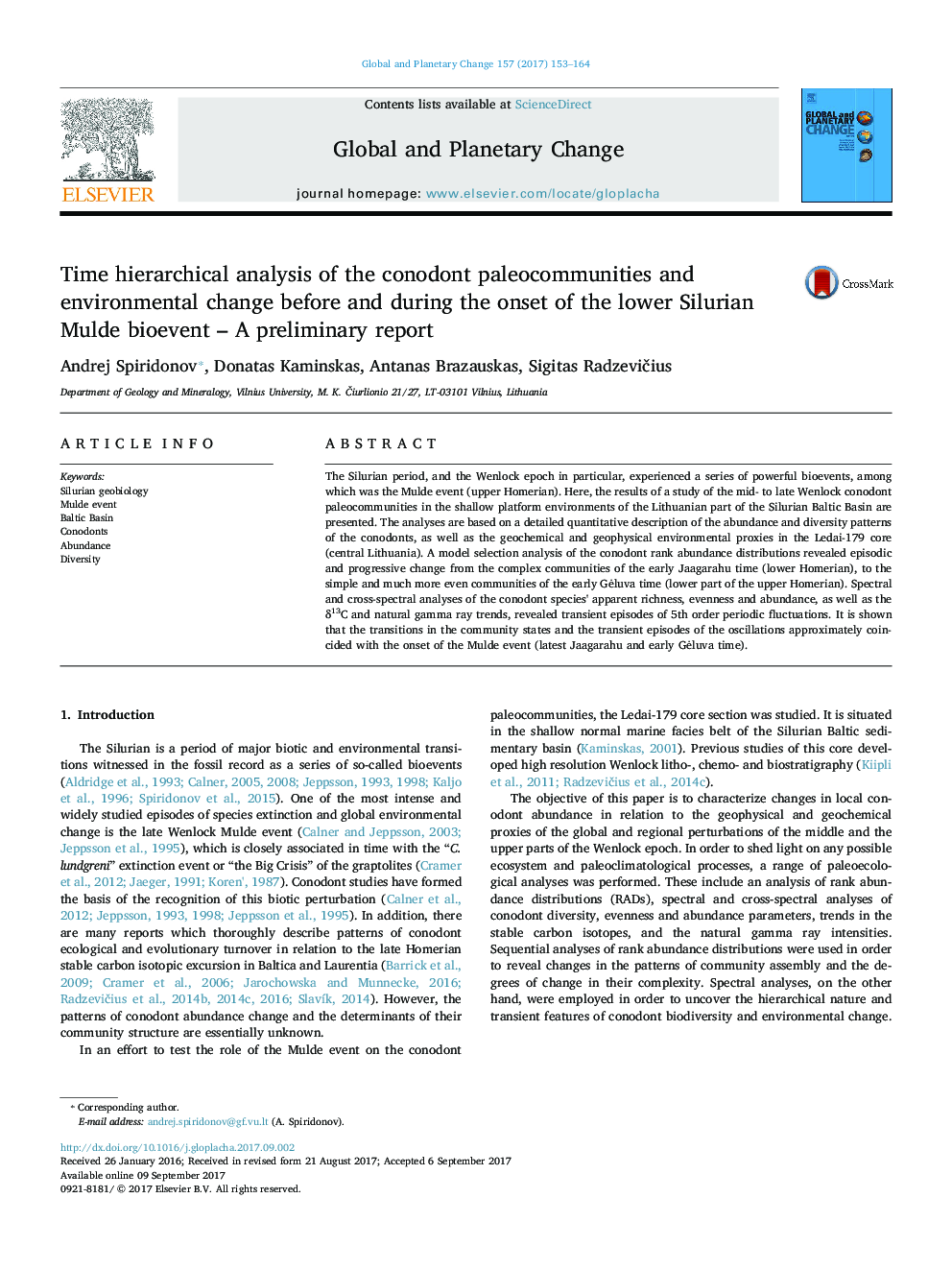| Article ID | Journal | Published Year | Pages | File Type |
|---|---|---|---|---|
| 5755318 | Global and Planetary Change | 2017 | 12 Pages |
Abstract
The Silurian period, and the Wenlock epoch in particular, experienced a series of powerful bioevents, among which was the Mulde event (upper Homerian). Here, the results of a study of the mid- to late Wenlock conodont paleocommunities in the shallow platform environments of the Lithuanian part of the Silurian Baltic Basin are presented. The analyses are based on a detailed quantitative description of the abundance and diversity patterns of the conodonts, as well as the geochemical and geophysical environmental proxies in the Ledai-179 core (central Lithuania). A model selection analysis of the conodont rank abundance distributions revealed episodic and progressive change from the complex communities of the early Jaagarahu time (lower Homerian), to the simple and much more even communities of the early GÄluva time (lower part of the upper Homerian). Spectral and cross-spectral analyses of the conodont species' apparent richness, evenness and abundance, as well as the δ13C and natural gamma ray trends, revealed transient episodes of 5th order periodic fluctuations. It is shown that the transitions in the community states and the transient episodes of the oscillations approximately coincided with the onset of the Mulde event (latest Jaagarahu and early GÄluva time).
Related Topics
Physical Sciences and Engineering
Earth and Planetary Sciences
Earth-Surface Processes
Authors
Andrej Spiridonov, Donatas Kaminskas, Antanas Brazauskas, Sigitas RadzeviÄius,
